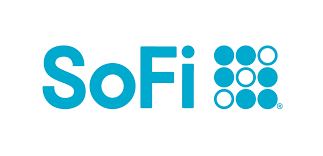In 2005, the NFL fined Randy Moss $10,000 for unsportsmanlike conduct. When a reporter asked him if he had written the check yet, he said that rich people don’t write checks. And when the reporter asked how he’d pay his fine, Moss had the perfect answer: “Straight cash, homie.”
The moral of the story? Sometimes you need $10,000 in cash. Now, you may have heard rumors that withdrawing this much money could set off alarms with the Feds. It’s not that extreme, but there is some truth to it.
Your bank will need to file a CTR
In 1970, Congress passed the Bank Secrecy Act. This law requires U.S. financial institutions to assist in detecting and stopping money laundering. One of the requirements is that financial institutions report cash transactions exceeding $10,000 in a day.
To do that, a bank files a Currency Transaction Report (CTR). For example, if you go to your bank and withdraw $12,000 from your checking account, your bank would need to file a CTR. It then sends the CTR to the Financial Crimes Enforcement Network (FinCEN).
Our Picks for the Best High-Yield Savings Accounts of 2024
|
SoFi Checking and Savings 
APY up to 4.60%
|
APY up to 4.60%
|
Min. to earn $0 |
|
Citizens Access® Savings 
|
Min. to earn $0.01 |
|
|
American Express® High Yield Savings 
APY 4.25%
|
APY 4.25%
|
Min. to earn $1 |
This might sound alarming, but it’s not a big deal. Unless you’re an international drug lord. If not, all this means is a slightly longer wait to get your money as the bank employee fills out the CTR.
Bank employees don’t need to disclose reporting requirements when you make a transaction. But they will let you know if you ask.
There’s nothing to worry about — unless you try to get around reporting requirements
For anyone withdrawing their own legally sourced money, a withdrawal of $10,000 or more won’t be a problem. Where you’ll run into trouble is if you try to avoid having a transaction reported.
Let’s say you don’t want your banking activities reported. You decide to split up large withdrawals to stay under $10,000. This is called structuring, and it’s illegal. If you structure financial activities in a way that avoids triggering reporting requirements, you’ve committed a crime — even if that money is legitimate.
Another example would be if you go to your bank, ask to withdraw over $10,000 from your savings account, and then change your mind. The bank employee would still need to file a CTR, even if you decide to withdraw less than $10,000, or nothing at all. They would also need to file a Suspicious Activity Report (SAR).
If you have to make a deposit or withdrawal of over $10,000, just do it normally. Don’t try to outsmart your bank and the government. And definitely don’t ask to withdraw $10,000, then say “Wait, better make it $9,999.”
Plan ahead when making a large withdrawal
You could just waltz into your bank and withdraw as much as you wanted from your account. It’s your money, after all. But there are a couple of steps to take before you do.
Check with your bank about the procedure for large withdrawals. Your bank may have a withdrawal limit, and for larger withdrawals, you may need to order the money in advance. The more money you need, the more likely this is. A $5,000 or $10,000 withdrawal may be fine, but $50,000 or $100,000 could require some waiting.
Make sure you also have a safe way to get to and from your bank. The downside of cash is that you don’t have much recourse if it’s stolen. Any time you’re handling a large amount of it, security is important.
Most people don’t make $10,000 withdrawals all too often, so it can feel a bit nerve-racking when you do. But it’s fairly normal in the grand scheme of things. CTRs are an important part of catching criminals, but for everyone else, they’re not a cause for concern.
These savings accounts are FDIC insured and could earn you 11x your bank
Many people are missing out on guaranteed returns as their money languishes in a big bank savings account earning next to no interest. Our picks of the best online savings accounts could earn you 11x the national average savings account rate. Click here to uncover the best-in-class accounts that landed a spot on our short list of the best savings accounts for 2024.
